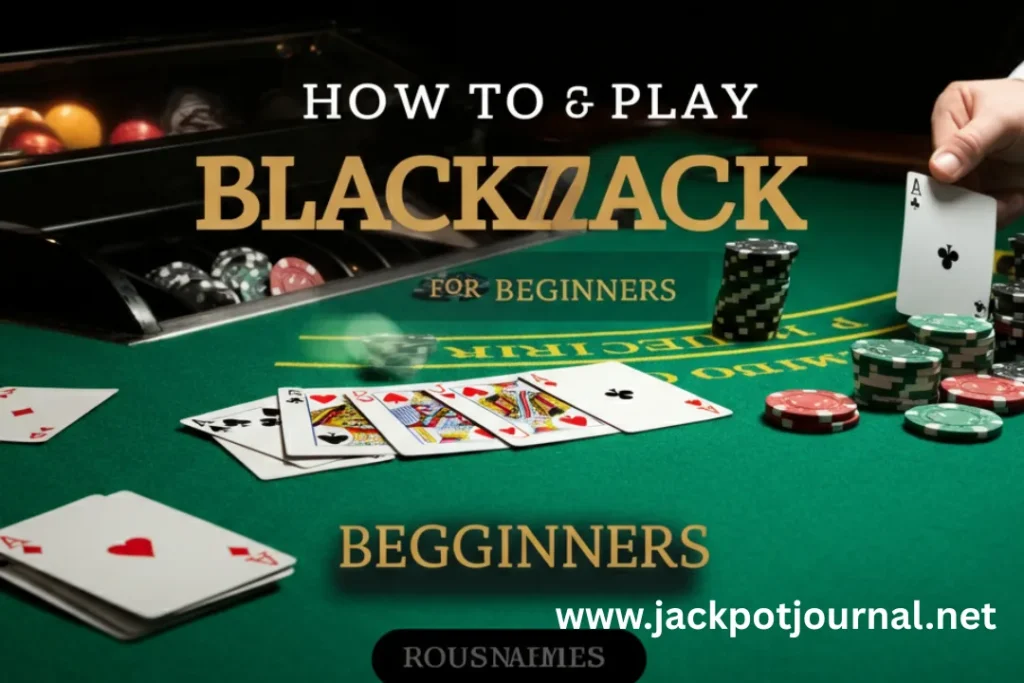If you’ve ever wandered through a casino or seen blackjack at a friend’s game night, you know it’s one of the most inviting card games around. Blackjack is easy to pick up, fast-paced, and brings the best of both luck and strategy. But if you’re just starting out, the game’s unfamiliar lingo and quick decisions can feel overwhelming. This beginner’s guide will break down how to play blackjack in clear, everyday language, so you can hit the table with confidence.
The Objective of Blackjack
Your main goal in blackjack is simple: beat the dealer’s hand without going over 21. That’s it. If you’re holding a total higher than the dealer, or if they “bust” by passing 21, you win. There’s no need to worry about the other players at the table—your real competition is the dealer.
It’s a common mistake to think you have to get a perfect 21 every hand, but you can win with lower totals if the dealer trips up. For beginners, knowing you don’t have to chase 21 at all costs is a big mindset shift.
Understanding Blackjack Card Values
Blackjack wouldn’t be much fun if you couldn’t keep track of the cards! Here’s what you need to know:
- Cards 2 to 10: Worth exactly what the number says.
- Face cards (Jack, Queen, King): Each counts as 10.
- Ace: This is the flexible wild card of blackjack. It can count as 1 or 11—whichever helps your hand more.
So, if you’re dealt an Ace and a 7, you’ve got either an 8 or an 18. That choice comes in handy throughout the game.
What a Typical Round Looks Like
Every round of blackjack follows a straightforward rhythm. Once you see it play out, you’ll feel much more at ease.
Placing Your Bet
To start, decide how many chips you want to wager and place them in front of you. Each table will clearly state the minimum and maximum bets allowed.
The Deal
The dealer hands out two cards to every player and deals themselves two. At most tables, your cards are dealt face up; the dealer has one card face up (the “upcard”) and one face down (“the hole card”).
Making Your Move
Once you have your cards, it’s decision time! Each player acts in turn, starting at the dealer’s left. Let’s look at your options next.
Your Basic Blackjack Moves
Most of the time, you’ll choose from a handful of simple moves:
Hit or Stand
- Hit: Ask for another card to improve your total.
- Stand: Stay with your current hand and end your turn.
This choice repeats until you’re satisfied with your hand or you bust.
Double Down
If you like your first two cards—a 9, 10, or 11 is ideal—you can double your bet and receive just one more card. It’s a bold move that can pay off big if you’re lucky.
Splitting Pairs
When your first two cards are matching (say, two 8s), you can “split” them into two separate hands. You’ll need to place a second bet and play each hand one at a time, following the same rules as usual.
How the Dealer Plays and How You Win
After everyone has finished their turn, the dealer reveals their hidden card. The dealer must hit until they reach at least 17. If they go over 21, everyone left in the round wins automatically.
If the dealer stays within 21, each player’s hand is compared to the dealer’s. If you have a higher value, you win. If you tie, your bet is returned. If your hand is lower, the house wins this time.
- You win: Your hand tops the dealer’s without busting.
- Dealer busts: All remaining players win their bets.
- Push: You and the dealer tie, so you keep your bet.
Essential Blackjack Tips for Beginners
Want to boost your chances right from the get-go? Keep these beginner-friendly tips in mind:
- Never take insurance—it’s rarely worth it.
- Always split Aces and 8s.
- Stand on 17 or higher, unless the dealer shows a very weak upcard.
- Start at low-stakes tables to get comfortable.
Getting these basics down will make your leap into live games a lot smoother and even more fun.
Wrapping Up: Ready to Play?
Blackjack is a great entry point if you’re new to casino gaming. You only have to remember a handful of rules, and your main opponent is always just the dealer. Once you know how to calculate card values and the standard moves (hit, stand, split, double down), you’re ready to try your luck—either with friends or at a real casino. If you want to dive deeper, you can check out this comprehensive guide on basic strategy from Bicycle Cards for even more helpful tips. Practice makes perfect, so have fun and play smart.
Frequently Asked Questions
What’s a blackjack or “natural”?
A blackjack (or natural) is when your first two cards are an Ace plus a 10 or face card—totaling 21. This is usually an automatic win unless the dealer has the same.
What’s the difference between a hard hand and a soft hand in blackjack?
A soft hand includes an Ace counted as 11, giving you extra flexibility. A hard hand is when the Ace must count as 1 to stay under 21.
Is it always a good idea to split pairs in blackjack?
You should always split Aces and 8s, as this gives you the best shot. Avoid splitting 10-value cards, since a 20 is tough to beat.
What’s “insurance” in blackjack, and should beginners take it?
Insurance is a side bet offered when the dealer’s upcard is an Ace. For most beginners, it’s not recommended as it usually favors the house.
Can other players’ decisions impact your blackjack hand?
Nope. Your fate in each hand is decided by your cards and the dealer’s, so don’t worry about how others play.
You may also visit: https://jackpotjournal.net/

